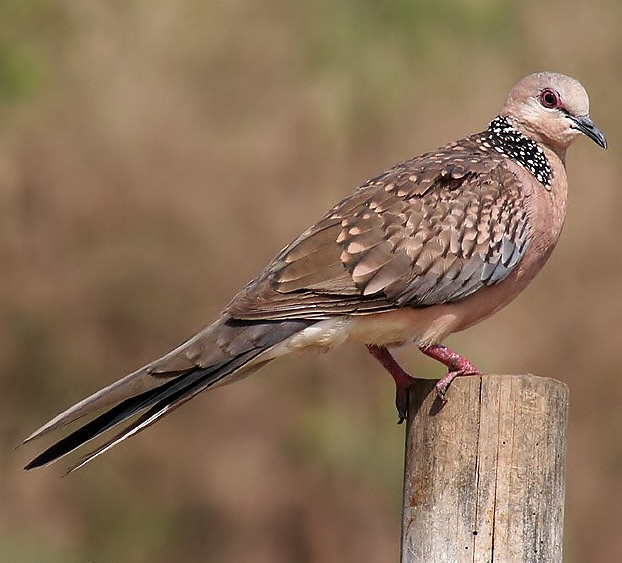 |
| Photo by J.M. Garg (Wikipedia) |
Common name:
spotted dove (en); rola-malhada (pt); tourterelle tigrine (fr); tórtola moteada (es); perlhalstaube (de)
Taxonomy:
Order Columbiformes
Family Columbidae
Range:
This species is found throughout southern Asia, from India and northern Pakistan to north-eastern China and south to Indonesia and the Philippines. It has also been introduced in eastern and southern Australia, New Zealand and several other Pacific islands and to southern California.
Size:
These birds are 28-33 cm long and have a wingspan of 43-47 cm. They weigh around 150 g.
Habitat:
These birds are found in parks and gardens, riverine woodlands and other forests, from sea level up to an altitude of 2.400 m.
Diet:
They feed on a wide variety of seeds, which they collect from the ground.
Breeding:
Spotted doves can breed all year round. they nest on a loose platform of twigs, usually placed on a large scrub or tree, on an horizontal branch or fork of branch. The female lays 2 glossy white eggs, which are incubated by both parents for around 2 weeks. The chicks are fed crop milk and seeds by both parents and fledge 14-16 days after hatching.
Conservation:
IUCN status – LC (Least Concern)
This species has a very large breeding range and is described as very common throughout almost all of its range. The population is suspected to be increasing as ongoing habitat degradation is creating new areas of suitable habitat.







